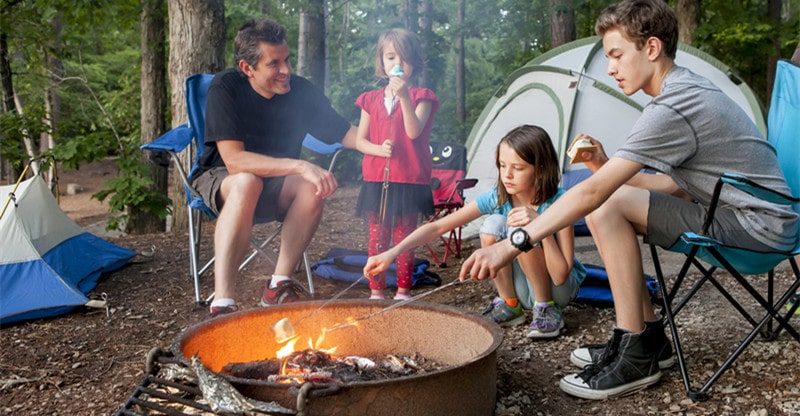Cooking And Camping: Top Tips For Feeding The Family
A big part of the camping experience is how you eat. There is an entire industry that covers cooking on the trail, which can be done with sophisticated tech or something as simple as a pan and a fire. Once you have your equipment at hand, you then need to know what you’re doing with it.
That’s where we come in. In this short post, we have our top tips for cooking at a campsite that’ll enable you to eat like a king or a queen no matter where you are. If you haven’t got your cooking equipment ready for your camping trip, you should start thinking about it. You can find equipment suggestions online, along with comparisons of products, such as comparing Coleman LXX vs LXE roadtrip grills.
Keep A Trimmed List
Before you start anything, you should keep a list of equipment and keep it short. When camping, you don’t want to get too complicated. The more complicated the meal and the cooking process, the higher the chance that something can go wrong.
So, what should be on your list of cooking equipment?
- A portable camping stove
- Aluminum foil
- Two pans with lids (one liquid, one frying)
- A coffee pot
- Lightweight plates, cups, and cutlery
- A sharp, serrated knife
- A large spoon
- Matches or a lighter
- Plastic bag for trash
- Plastic container(s) for storage
- Towel/washing up equipment if you’re camping for an extended period
Those are the basics that you should bring when cooking on the trail. Of course, you may need more equipment if cooking for a whole family but you can get by on the items above. You should only take the cookware that you know you will use.
Plan Your Meals
Cooking at your campsite is much easier if you plan your meals beforehand. Prepare ingredients to make cooking easy. Measure any ingredients and only bring what you need to limit waste.
Grate cheese at home if you’re using it and chop up any other meats or vegetables you’re bringing. This means you don’t have to do it at the campsite, which is an unnecessary effort and exposes your food to insects and debris.
You should bring some of your favorite condiments and things like salt and pepper too, to improve whatever you cook on the trail.
Cook In Batches
A different and more extreme approach to campsite cooking is to have everything pre-cooked before you even arrive. Make something, it can be dry or wet, and then freeze it and properly store it in a container that keeps it cool. A good cool box is a must if you’re going to attempt this.
Then you can simply reheat the food with your camp stove and avoid a lot of the perils associated with cooking. Most food can be reheated using just one pan. It’s more of a hack than a tip on how to cook because it’s so easy!
Get Your 5-A-Day
You want your camping meals to be nutritional since you’re exerting yourself when out on the trail. The easiest way to do this is to try and have fresh fruit and vegetables instead of processed foods, and if you’re staying for a while then you can bring fruit that’ll ripen while on your trip.
Bring Drinks
Depending on the context of your trip and present company, you can bring a wide variety of drinks with you to the campsite. For cold mornings in the wild, tea and coffee are a must and can be brought in convenient plastic tubs. You can even bring sugar and some honey if somebody in the family prefers their drinks sweet.
If you’re drinking alcohol with friends then you can make them in batches or buy ready-made mixes that are easily prepared. If you’ve packed limes or lemons, you can use them for cocktails too! Naturally, you should drink responsibly when you’re out in the wilderness.
Protect Your Food
In the woods, some critters want what you have! Whether it’s insects or bears, animals will sniff out your ingredients and want to access them.
Nothing ruins camping cookery like a ransacked tent, so you should keep your food under lock and key. Keep them in a vehicle if one is nearby or tie them up a tree if raccoons or bears are a danger.
You should also cover food while it cooks in pots or pans. That way, insects don’t get to the food and it will also cook faster.



